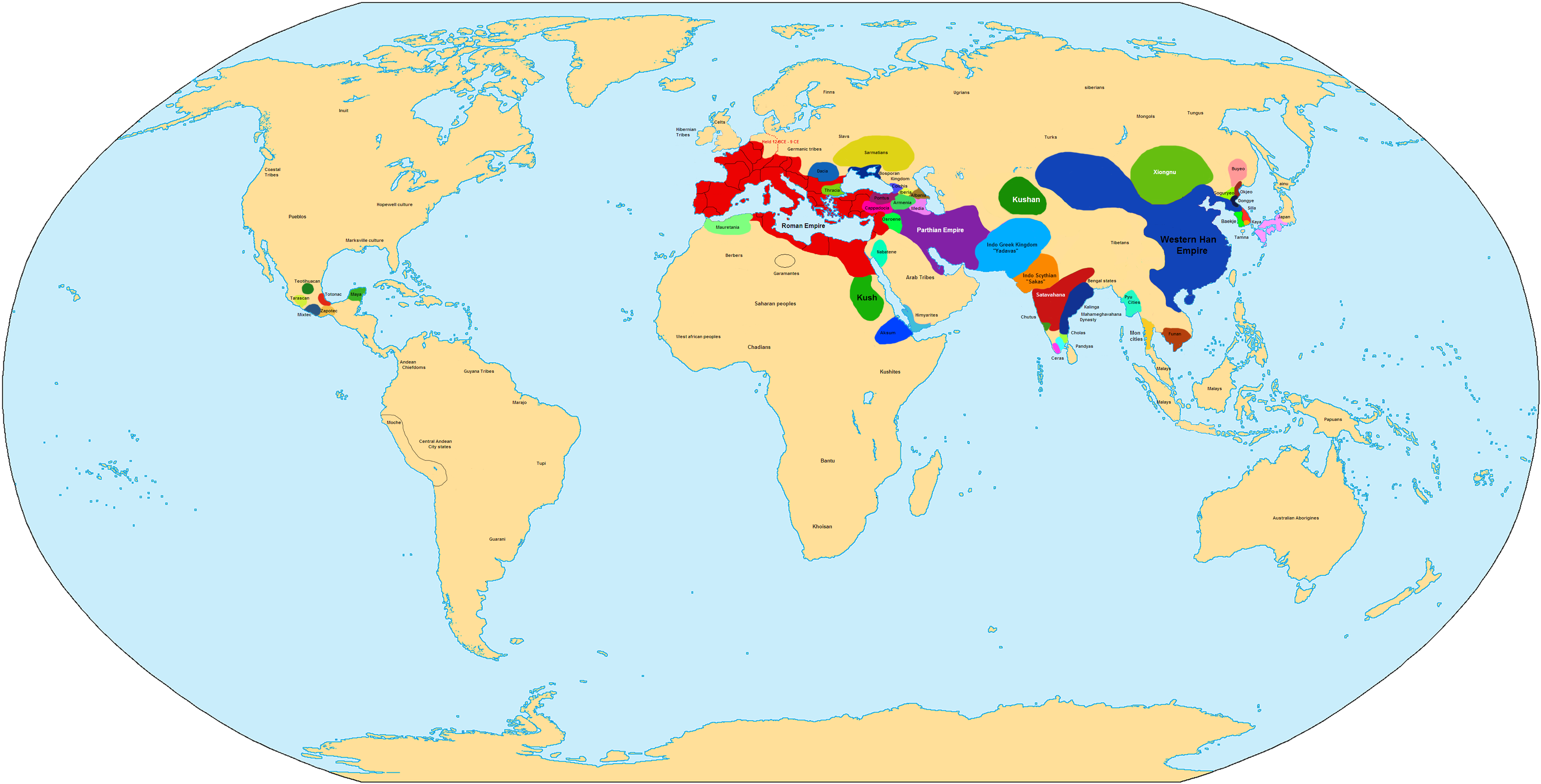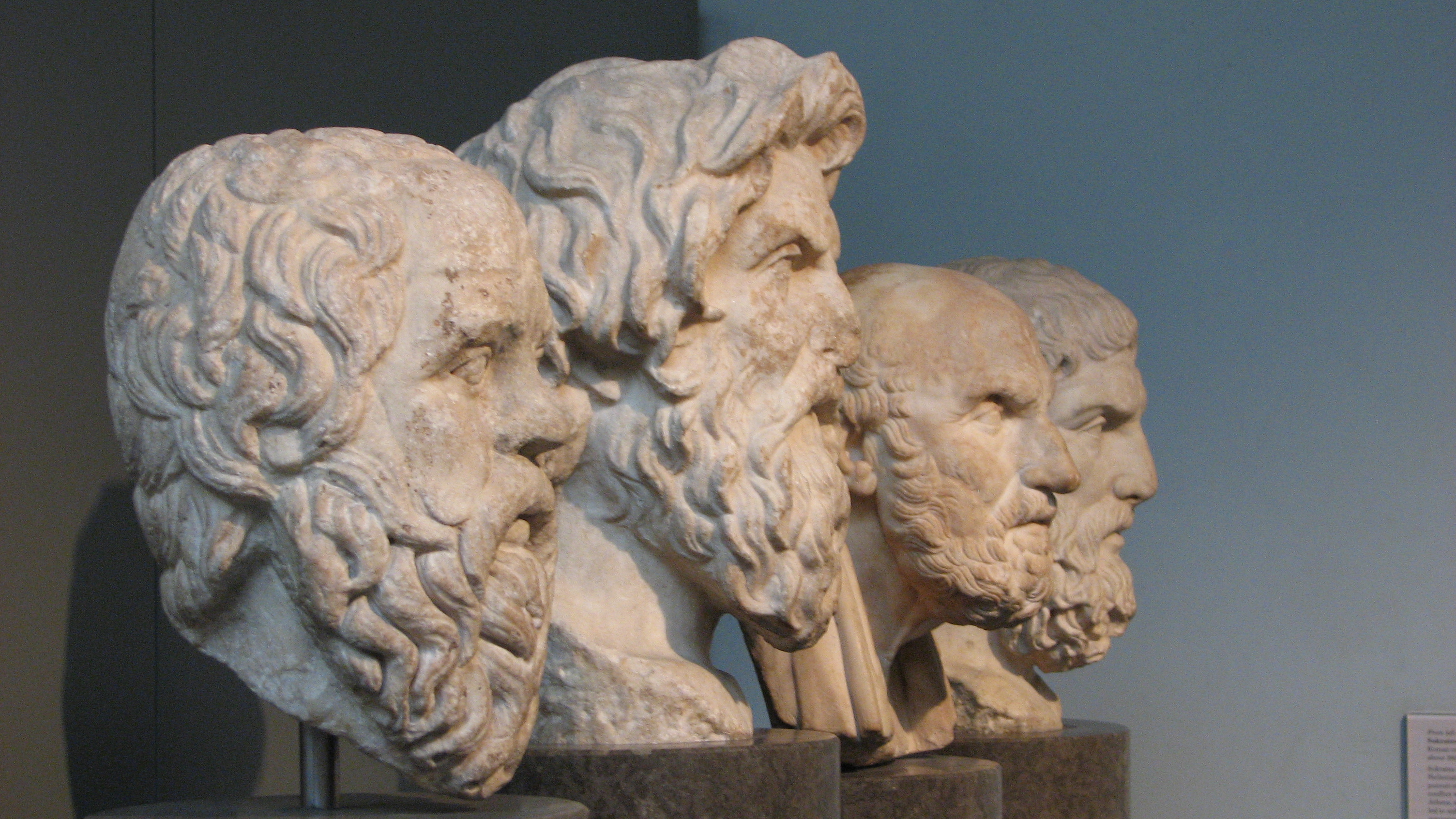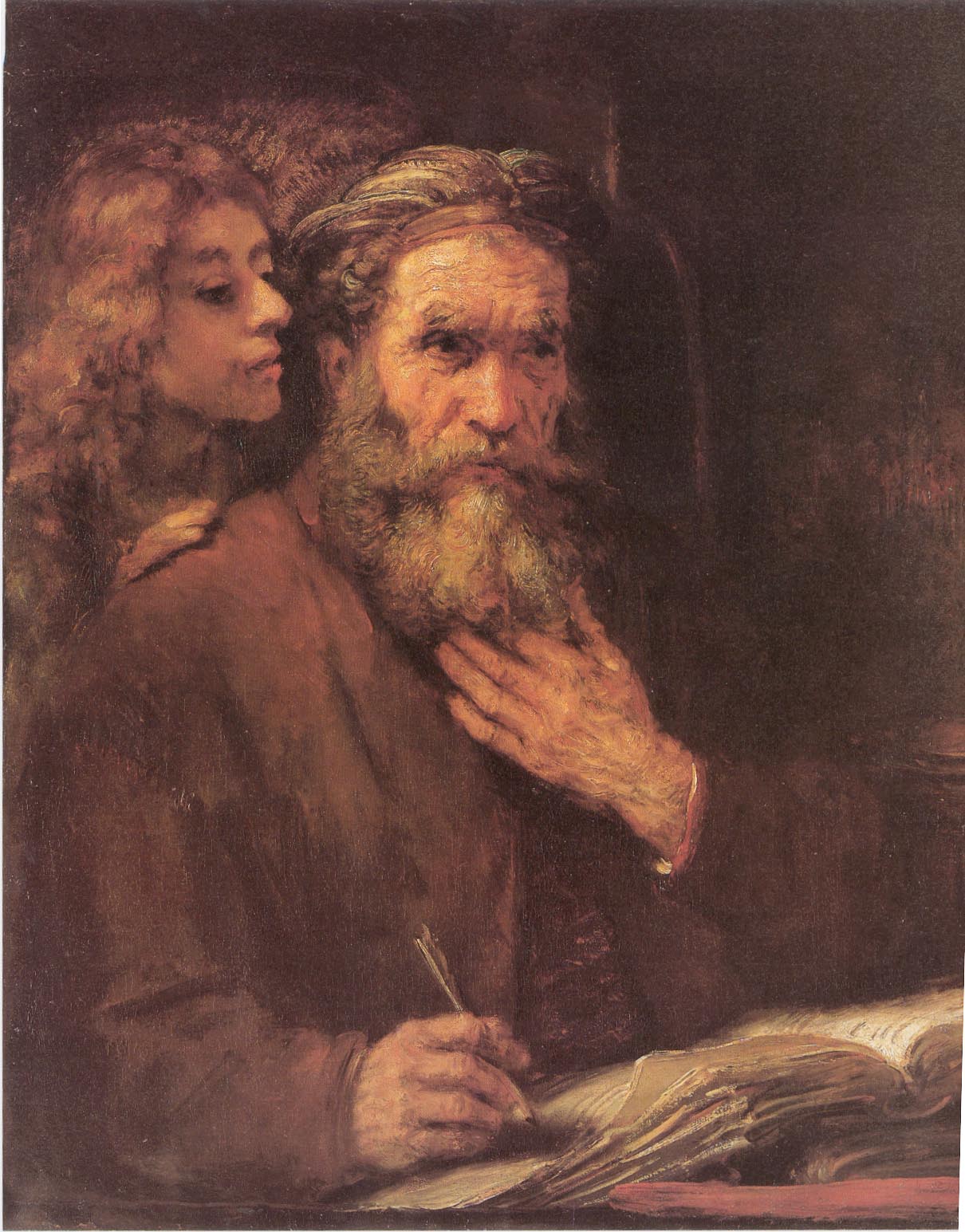|
Pseudo-Phocylides
Pseudo-Phocylides is an apocryphal work, at one time, claiming to have been written by Phocylides, a Greek Philosophy, Greek philosopher of the 6th century BC. Its authorship was deciphered by Jacob Bernays. The text is noticeably Jewish, and depends on the Septuagint, although it does not make direct references to either the Hebrew Bible or Judaism. Textual and linguistic studies point to the work as having originally been written in Greek language, Greek, and having originated somewhere between 100BC and 100AD, although the oldest surviving manuscripts date from the 10th century AD. Authorship Jonathan Klawans believes the author was a Christian. Texts Douglas Young (classicist), Douglas Young used five manuscripts for his edition: M (tenth cent., in Paris); B (tenth cent., in Oxford); P (twelth cent., in Paris); L (thirteenth cent., in Florence); V (thirteenth-fourteenth cent., in Vienna). Description Pseudo-Phocylides consists of a series of aphorisms, and these refer indire ... [...More Info...] [...Related Items...] OR: [Wikipedia] [Google] [Baidu] |
Phocylides
Phocylides ( el, Φωκυλίδης ὁ Μιλήσιος), Greeks, Greek gnomic poetry, gnomic poet of Miletus, contemporary of Theognis of Megara, was born about 560 BC. A few fragments of his "Maxim (philosophy), maxims" have survived (chiefly in the ''Florilegium'' of Stobaeus), in which he expresses his contempt for the pomps and vanities of rank and wealth, and sets forth in simple language his ideas of honour, justice and wisdom. An example is an epigram quoted by Dio Chrysostom: Aristotle also found cause to quote him: Works Phocylides of Miletus was once credited with writing Pseudo-Phocylides, a complete didactic poem (230 hexameters). However, that text is now considered to be the work of an Alexandrian Christians, Christian of Jewish origin who lived between 170 BC and AD 50. The Jewish element is shown in verbal agreement with passages of the Old Testament (especially the Wisdom of Sirach); the Christian by the doctrine of the immortality of the Soul (spirit), so ... [...More Info...] [...Related Items...] OR: [Wikipedia] [Google] [Baidu] |
Old Testament Pseudepigrapha
Pseudepigrapha are falsely attributed works, texts whose claimed author is not the true author, or a work whose real author attributed it to a figure of the past.Bauckham, Richard; "Pseudo-Apostolic Letters", ''Journal of Biblical Literature'', Vo. 107, No. 3, September 1988, pp.469–494. Some of these works may have originated among Jewish Hellenizers, others may have Christian authorship in character and origin. Apocalyptic and related works * 1 (Ethiopic Apocalypse of) Enoch (Jewish, c. 200 BCE–50 BCE) * 2 (Slavonic Apocalypse of) Enoch (Jewish, c. 30 BCE–70 CE) * 3 (Hebrew Apocalypse of) Enoch (Jewish, in present form from c. 108 CE-135 CE) * Sibylline Oracles (both Jewish and Christian, c. 2nd cent. BCE–7th cent. CE) * Treatise of Shem (c. near end of first cent. BCE) * Apocryphon of Ezekiel (mostly lost, original form c. late 1st cent. BCE) *Apocalypse of Zephaniah (mostly lost, original form c. late 1st cent. BCE) * 4 Ezra (original Jewish form after 70 CE, fi ... [...More Info...] [...Related Items...] OR: [Wikipedia] [Google] [Baidu] |
Pieter Willem Van Der Horst
Pieter Willem van der Horst (born 4 July 1946) is a scholar and university professor emeritus specializing in New Testament studies, Early Christian literature, and the Jewish and Hellenistic context of Early Christianity. Education and career Van der Horst was born in Driebergen, Netherlands. He studied classical philology and received a doctorate in theology in 1978. From 1969 to 2006, he was a research assistant, junior and senior lecturer, and full professor at the Faculty of Theology of Utrecht University. He is an editor of the series Commentaries on Early Jewish Literature, published by Walter de Gruyter. He became a member of the Royal Netherlands Academy of Arts and Sciences in 1994.Manfred Gerstenfeld, "Utrecht University: The Myth of Jewish Cannibalism, Censorship, and Fear of Muslim Intimidation," Jerusalem Center for Public Affairs, September 2008online./ref> "Jewish cannibalism" controversy In 2006, van der Horst became embroiled in a controversy over his retiremen ... [...More Info...] [...Related Items...] OR: [Wikipedia] [Google] [Baidu] |
Aphorism
An aphorism (from Greek ἀφορισμός: ''aphorismos'', denoting 'delimitation', 'distinction', and 'definition') is a concise, terse, laconic, or memorable expression of a general truth or principle. Aphorisms are often handed down by tradition from generation to generation. The concept is generally distinct from those of an adage, brocard, chiasmus, epigram, maxim ( legal or philosophical), principle, proverb, and saying; although some of these concepts may be construed as types of aphorism. Often, aphorisms are distinguished from other short sayings by the need for interpretation to make sense of them. In ''A Theory of the Aphorism'', Andrew Hui defined an aphorism as "a short saying that requires interpretation." History The word was first used in the ''Aphorisms'' of Hippocrates, a long series of propositions concerning the symptoms and diagnosis of disease and the art of healing and medicine. The often cited first sentence of this work is: "" - "life is ... [...More Info...] [...Related Items...] OR: [Wikipedia] [Google] [Baidu] |
Septuagint
The Greek Old Testament, or Septuagint (, ; from the la, septuaginta, lit=seventy; often abbreviated ''70''; in Roman numerals, LXX), is the earliest extant Greek translation of books from the Hebrew Bible. It includes several books beyond those contained in the Masoretic text of the Hebrew Bible as canonically used in the tradition of mainstream Rabbinical Judaism. The additional books were composed in Greek, Hebrew, or Aramaic, but in most cases, only the Greek version has survived to the present. It is the oldest and most important complete translation of the Hebrew Bible made by the Jews. Some targums translating or paraphrasing the Bible into Aramaic were also made around the same time. The first five books of the Hebrew Bible, known as the Torah or the Pentateuch, were translated in the mid-3rd century BCE. The remaining translations are presumably from the 2nd century BCE. The full title ( grc , Ἡ μετάφρασις τῶν Ἑβδομήκοντα, , The Tr ... [...More Info...] [...Related Items...] OR: [Wikipedia] [Google] [Baidu] |
Hexameter
Hexameter is a metrical line of verses consisting of six feet (a "foot" here is the pulse, or major accent, of words in an English line of poetry; in Greek and Latin a "foot" is not an accent, but describes various combinations of syllables). It was the standard epic metre in classical Greek and Latin literature, such as in the ''Iliad'', ''Odyssey'' and ''Aeneid''. Its use in other genres of composition include Horace's satires, Ovid's ''Metamorphoses,'' and the Hymns of Orpheus. According to Greek mythology, hexameter was invented by Phemonoe, daughter of Apollo and the first Pythia of Delphi.Pliny the Elder, 7.57 __TOC__ Classical Hexameter In classical hexameter, the six feet follow these rules: * A foot can be made up of two long syllables (– –), a spondee; or a long and two short syllables, a dactyl (– υ υ). * The first four feet can contain either one of them. * The fifth is almost always a dactyl, and last must be a spondee. A short syllable (υ) is a syll ... [...More Info...] [...Related Items...] OR: [Wikipedia] [Google] [Baidu] |
1st-century Texts
The 1st century was the century spanning AD 1 ( I) through AD 100 ( C) according to the Julian calendar. It is often written as the or to distinguish it from the 1st century BC (or BCE) which preceded it. The 1st century is considered part of the Classical era, epoch, or historical period. The 1st century also saw the appearance of Christianity. During this period, Europe, North Africa and the Near East fell under increasing domination by the Roman Empire, which continued expanding, most notably conquering Britain under the emperor Claudius (AD 43). The reforms introduced by Augustus during his long reign stabilized the empire after the turmoil of the previous century's civil wars. Later in the century the Julio-Claudian dynasty, which had been founded by Augustus, came to an end with the suicide of Nero in AD 68. There followed the famous Year of Four Emperors, a brief period of civil war and instability, which was finally brought to an end by Vespasian, ninth Roman emperor, ... [...More Info...] [...Related Items...] OR: [Wikipedia] [Google] [Baidu] |
1st-century BCE Texts
The 1st century was the century spanning AD 1 (Roman numerals, I) through AD 100 (Roman numerals, C) according to the Julian calendar. It is often written as the or to distinguish it from the 1st century BC (or BCE) which preceded it. The 1st century is considered part of the Classical era, epoch, or History by period, historical period. The 1st century also saw the Christianity in the 1st century, appearance of Christianity. During this period, Europe, North Africa and the Near East fell under increasing domination by the Roman Empire, which continued expanding, most notably conquering Britain under the emperor Claudius (AD 43). The reforms introduced by Augustus during his long reign stabilized the empire after the turmoil of the previous century's civil wars. Later in the century the Julio-Claudian dynasty, which had been founded by Augustus, came to an end with the suicide of Nero in AD 68. There followed the famous Year of Four Emperors, a brief period of civil war and inst ... [...More Info...] [...Related Items...] OR: [Wikipedia] [Google] [Baidu] |
Greek Philosophy
Ancient Greek philosophy arose in the 6th century BC, marking the end of the Greek Dark Ages. Greek philosophy continued throughout the Hellenistic period and the period in which Greece and most Greek-inhabited lands were part of the Roman Empire. Philosophy was used to make sense of the world using reason. It dealt with a wide variety of subjects, including astronomy, epistemology, mathematics, political philosophy, ethics, metaphysics, ontology, logic, biology, rhetoric and aesthetics. Greek philosophy has influenced much of Western culture since its inception. Alfred North Whitehead once noted: "The safest general characterization of the European philosophical tradition is that it consists of a series of footnotes to Plato". Clear, unbroken lines of influence lead from ancient Greek and Hellenistic philosophers to Roman philosophy, Early Islamic philosophy, Medieval Scholasticism, the European Renaissance and the Age of Enlightenment. Greek philosophy was infl ... [...More Info...] [...Related Items...] OR: [Wikipedia] [Google] [Baidu] |
Epistle Of James
The Epistle of James). is a general epistle and one of the 21 epistles (didactic letters) in the New Testament. James 1:1 identifies the author as "James, a servant of God and of the Lord Jesus Christ" who is writing to "the twelve tribes scattered abroad". The epistle is traditionally attributed to James the brother of Jesus James the Just, or a variation of James, brother of the Lord ( la, Iacobus from he, יעקב, and grc-gre, Ἰάκωβος, , can also be Anglicized as "Jacob"), was "a brother of Jesus", according to the New Testament. He was an early lead ... (James the Just), and the audience is generally considered to be Jewish Christians, who were dispersed outside Israel."Letters of Saint James." ''Orthodox Church in America'', OCA, (n.d.). Accesse ... [...More Info...] [...Related Items...] OR: [Wikipedia] [Google] [Baidu] |
New Testament
The New Testament grc, Ἡ Καινὴ Διαθήκη, transl. ; la, Novum Testamentum. (NT) is the second division of the Christian biblical canon. It discusses the teachings and person of Jesus, as well as events in first-century Christianity. The New Testament's background, the first division of the Christian Bible, is called the Old Testament, which is based primarily upon the Hebrew Bible; together they are regarded as sacred scripture by Christians. The New Testament is a collection of Christian texts originally written in the Koine Greek language, at different times by various authors. While the Old Testament canon varies somewhat between different Christian denominations, the 27-book canon of the New Testament has been almost universally recognized within Christianity since at least Late Antiquity. Thus, in almost all Christian traditions today, the New Testament consists of 27 books: * 4 canonical gospels ( Matthew, Mark, Luke, and John) * The Acts of the ... [...More Info...] [...Related Items...] OR: [Wikipedia] [Google] [Baidu] |

.jpg)



